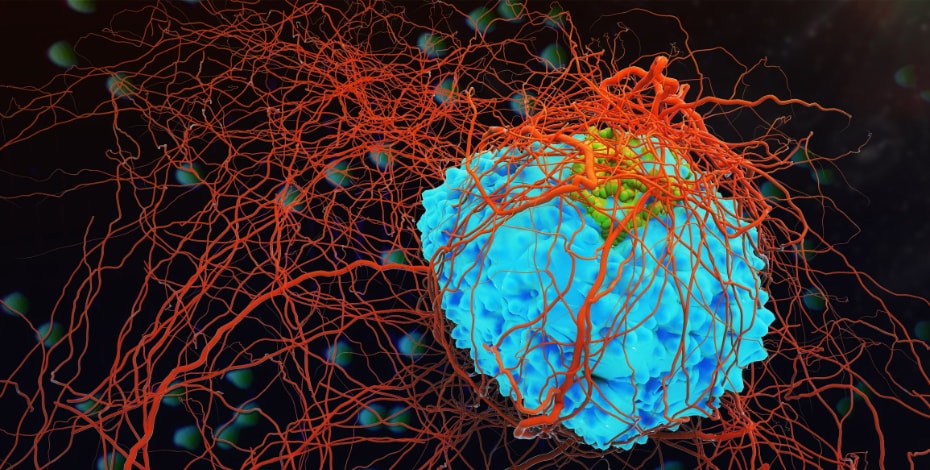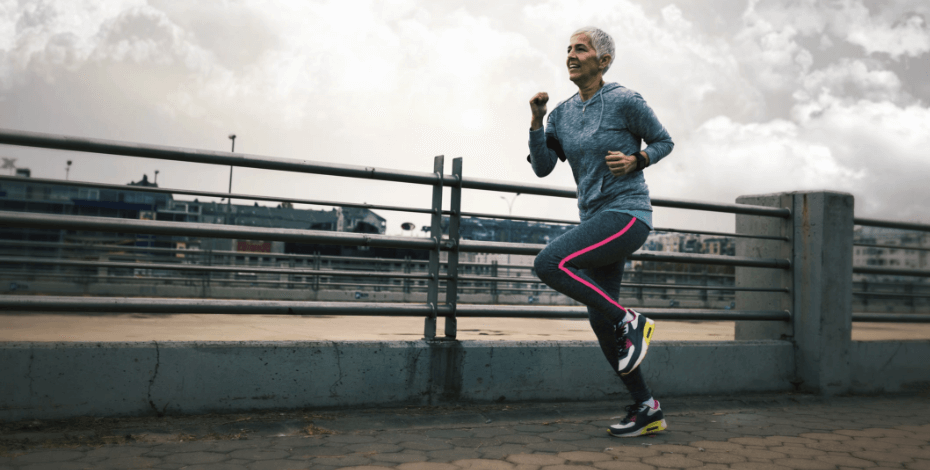
Five facts: cancer

APA Cancer, Palliative Care and Lymphoedema group members Elise Gane, Amy Dennett and Veronica Scriven provide five discussion points.
1. Exercise may improve survival and prevent recurrence
Cancer is recognised as a chronic disease and is the leading cause of disease burden in Australia (AIHW 2017). Approximately 134,000 new diagnoses of cancer were expected in Australia in 2017, with the most common types being breast (females), colorectal, prostate, and melanoma. Survival rates are improving, however not for all cancers, and cancer still accounts for three in every 10 Australian deaths.
Recent research has demonstrated exercise can counteract the side- effects of cancer and its associated treatments (Stout et al 2017). In addition, a recent systematic review found patients who exercised after a cancer diagnosis had a lower relative risk of dying from cancer and of having their cancer recur after treatment, in comparison to patients who performed no, or less, exercise (Cormie et al 2017). Possible mechanisms for this effect include (1) improved physical fitness leading to improved tolerance to oncology treatment (meaning patients can have more treatment), or improved recovery from surgery (fewer complications), and (2) biological mechanisms such as exercise-induced positive changes to the immune and endocrine systems, both of which affect cancer growth. Physiotherapists should use this high-quality evidence to advocate for the embedding of exercise interventions into routine cancer care.
2. Exercise is the number one treatment for cancer-related fatigue
Cancer-related fatigue (CRF) remains one of the most prevalent and troublesome side-effects experienced by people undergoing, and following cancer treatment, and is reported to be experienced by up to 96 per cent of patients receiving adjuvant therapy (Al Majid & Gray 2009, Mustian et al 2016). CRF can significantly impact physical function, psychosocial health and quality of life (Al-Majid & Gray 2009, Mustian et al 2016).
It is important for physiotherapists to identify the difference between CRF and tiredness in this clinical population. CRF is a persistent, debilitating, and overwhelming feeling of exhaustion which cannot be explained by other physiological means, or relieved by sleep or rest (Cancer Institute NSW 2015).
Exercise of at least moderate intensity is the most effective treatment to manage CRF, and is more effective than pharmaceutical and psychological treatments (Mustian et al 2016, Dennett et al 2016). Exercise should be recommended as a first line treatment to manage CRF. Physiotherapists have an important role to play in prescribing tailored exercise interventions for patients with cancer to manage their CRF.

3. People with advanced cancer can (and want to) exercise
Advances in oncology treatments mean many people with advanced cancer will live many months to years with their disease. Patients can experience symptoms such as fatigue, pain, shortness of breath and loss of physical fitness and function—all of which are amenable to exercise. Exercise is safe and feasible before, during and after treatment for people with advanced cancer (Heywood et al 2018, Dittus et al 2017). The strongest benefits for these patients are related to reducing functional decline and improving strength and aerobic fitness (Dittus et al 2017).
A combination of strength and aerobic training appears to be effective, however more work is required to determine the best prescriptions for exercise modality and dose for those with advanced disease.
Patients with advanced cancer also want to participate in exercise and to be physically active (Lowe 2010). In particular, lung cancer survivors believe that physical activity can prevent their health from deteriorating, facilitate their activities of daily living, and improve mental health (Granger et al 2018). As physiotherapists, we are well placed across the continuum of care to engage this client group in exercise, and to promote exercise as a way of contributing to patients with advanced disease to ‘live well’.
4. People diagnosed with cancer should aim to complete moderate-intensity exercise, building up to 150 minutes
The Clinical Oncology Society of Australia released a position statement in 2018 encouraging the individualised prescription of up to 150 minutes of exercise per week as part of routine cancer care. Recent evidence suggests that moderate-intensity exercise is safe and effective for cancer survivors (Dennett et al 2016). High-intensity exercise training may also have a place in cancer rehabilitation, particularly for those who have completed primary chemotherapy and/or radiation (Toohey et al 2018). The type of exercise prescribed is important, for example, aerobic training is most beneficial for treating fatigue (Dennett et al 2016) and impact training such as jumping and skipping is most beneficial for preventing bone loss in men with prostate cancer (Newton et al 2018).
Many physiotherapists lack confidence in prescribing exercise to patients with cancer. While physiotherapists use clinical expertise, patient goals and symptoms to guide prescription, this can be at the expense of adhering to exercise principles such as specificity, progression, overload and FITT (frequency, intensity, type, time) (Dennett et al 2017). It is important we use validated outcome measures (eg, six-minute walk test) and physiological measures (eg, heart rate) to guide exercise prescription to maximise the benefits we can provide to our patients living with or beyond cancer.
5. Exercise is safe for people with lymphoedema
Lymphoedema is the retention of fluid in the tissues, appearing as swelling, resulting from a compromised lymphatic system. Cancer and the treatments for cancer can be the cause of that compromise, in the form of removal or damage to lymph nodes and vessels, or an increase in fluid load. Incidence rates vary with the type of cancer, for example, one in five Australian women with breast cancer will develop arm lymphoedema (DiSipio et al 2013).
Physiotherapists should encourage people with cancer-related lymphoedema to exercise, and reassure those who are worried about exacerbating their lymphoedema. A systematic review published in 2016 found exercise had no effect on lymphoedema volume or symptoms for any type of exercise (aerobic, resistance, aerobic plus resistance) (Singh et al 2016), meaning exercise does not make lymphoedema worse.
Furthermore, in women with breast cancer, exercise in the form of progressive resistance training results in gains in upper limb strength without changing arm volume or the incidence of breast cancer-related arm lymphoedema (Paramanandam & Roberts 2014). Physiotherapists should educate patients, families and other health professionals so that having cancer-related lymphoedema does not stop patients from participating in exercise and gaining the benefits that come with exercise.
References
DiSipio T, Rye S, NewmanB, Hayes S. Incidence of unilateral arm lymphoedema after breast cancer: a systematic review and meta-analysis. Lancet Oncol, 2013;14(6):500-515.
Singh B, Disipio T, Peake J, Hayes SC. (2016). Systematic review and meta-analysis of the effects of exercise for those with cancer-related lymphedema. Archives of Physical Medicine and Rehabilitation, 97, 302-15.
Paramanandam VS, Roberts D. (2014). Weight training is not harmful for women with breast-cancer related lymphoedema: a systematic review. Journal of Physiotherapy, 60, 136-143.
Dennett AM, Peiris CL, Shields N, Prendergast LA, Taylor NF. 2016. Moderate-intensity exercise reduces fatigue and improves mobility in cancer survivors: A systematic review and meta-regression. J Physiother 62(2): 68-82.
Dennett AM, Peiris CL, Shields N, Morgan D, Taylor NF. 2017a. Exercise therapy in oncology rehabilitation in Australia: a mixed methods study. Asia Pac J Clin Oncol 13(5): e515-e527.
Dittus KL, Gramling RE and Ades PA. 2017. Exercise interventions for individuals with advanced cancer: A systematic review. Prev Med 104: 124-132.
Granger, C.L. ; Parry, S.M. ; Edbrooke, L. ; Abo, S. ; Leggett, N. ; Dwyer, M. ; Denehy, L. Improving the delivery of physical activity services in lung cancer: A qualitative representation of the patient’s perspective . European Journal of Cancer Care, 2018
Heywood R, McCarthy AL, Skinner TL. Efficacy of Exercise Interventions in Patients With Advanced Cancer: A Systematic Review. Arch Phys Med Rehabil. 2018 Dec;99(12):2595-2620.
Lowe SS, Watanabe SM, Baracos VE, Courneya KS. Physical activity interests and preferences in palliative cancer patients. Support Care Cancer. 2010 Nov;18(11):1469-75
Newton RU1,2,3,4, Galvão DA1,2, Spry N1,5,6, Joseph D1,6,7, Chambers SK1,8,9,10, Gardiner RA1,4,11, Wall BA12, Bolam KA13, Taaffe DR1,2,4. Exercise Mode Specificity for Preserving Spine and Hip BMD in Prostate Cancer Patients. Med Sci Sports Exerc. 2018 [epub ahead of print]
Toohey K, Pumpa K, McKune A, Cooke J and Semple S. 2018. High-intensity exercise interventions in cancer survivors: a systematic review exploring the impact on health outcomes. J Cancer Res Clin Oncol 144(1):1-12. doi: 10.1007/s00432-017-2552-x
Al-Majid, S., & Gray, P. (2009). A Biobehavioural Model for the Study of Exercise Interventions in Cancer-related Fatigue. Biological Research for Nursing, 10(4), 381-391.
Cancer Institute NSW. (2015). Fatigue. Retrieved December 11, 2018, from NSW Government Health Web site: https://www.eviq.org.au/side-effects-documents/1793-fatigue##patient-edu...
Clinical Oncology Society of Australia. (2018). COSA Position Statement on Exercise in Cancer Care. Retrieved from COSA Web site: https://www.cosa.org.au/media/332488/cosa-position-statement-v4-web-fina...
Mustian, K., Alfano, C., Heckler, C., A, K., Kleckner, I., Leach, C., . . . Miller, S. (2016). Comparison of Pharmaceutical, Psychological, and Exercise Treatments for Cnacer-Related Fatigue. Journal of the American Medical Association, E1-E8. Retrieved from http://jamanetwork.com/pdfaccess.ashx?url=/data/journals/oncology/0/
van Waart, H., Stuiver, M., van Harten, W., Geleijn, E., Kieffer, J., Buffart, L., . . . Aaronson, N. (2015). Effect of Low-Intensity Physical Activity and Moderate - to High-Intensity Physical Exercise During Adjuvent Chemotherapy on Physical Fitness, Fatigue, and Chemotherapy Completion Rates: Results of the PACES Randomized Clinical Trial. Journal of Clinical Oncology, 33(17), 1918-1927.
Australian Institute of Health and Welfare (2017). Cancer in Australian 2017. Cat. no: CAN 100. Canberra: AIHW.
Stout NL, Baima J, Swisher AK, Winters-Stone KM, Welsh J. (2017). A systematic review of exercise systematic reviews in the cancer literature (2005-2017). PM&R, 9(9), S347-S384.
Cormie P, Zopf EM, Zhang X, Schmitz KH. (2017). The impact of exercise on cancer mortality, recurrence, and treatment-related adverse effects. Epidemiologic Reviews, 39(1), 71-92.
Dr Elise Gane, APAM, is the Conjoint Research Fellow in Physiotherapy at The University of Queensland and the Princess Alexandra Hospital in Brisbane. Elise has clinical and research experience in oncology, in particular head and neck cancer. She is also the national chair of the APA Cancer, Palliative Care and Lymphoedema Group.
Amy Dennett, APAM, is a senior physiotherapist at the Peter Macallum Cancer Centre and Eastern Health in Melbourne, with a special interest in oncology rehabilitation and prehabilitation. Amy completed her PhD in 2018 on improving physical activity through oncology rehabilitation.
Veronica Scriven, APAM, is the acting manager for cancer services and innovation for Murrumbidgee Local Health District. Veronica has worked as a senior physiotherapist in both oncology and palliative care settings, and has a special interest in the role of physiotherapy in cancer survivorship. Veronica is currently undertaking her MBA and is the chair of the National Cancer, Palliative Care and Lymphoedema Career Pathway Working Group.
© Copyright 2025 by Australian Physiotherapy Association. All rights reserved.





